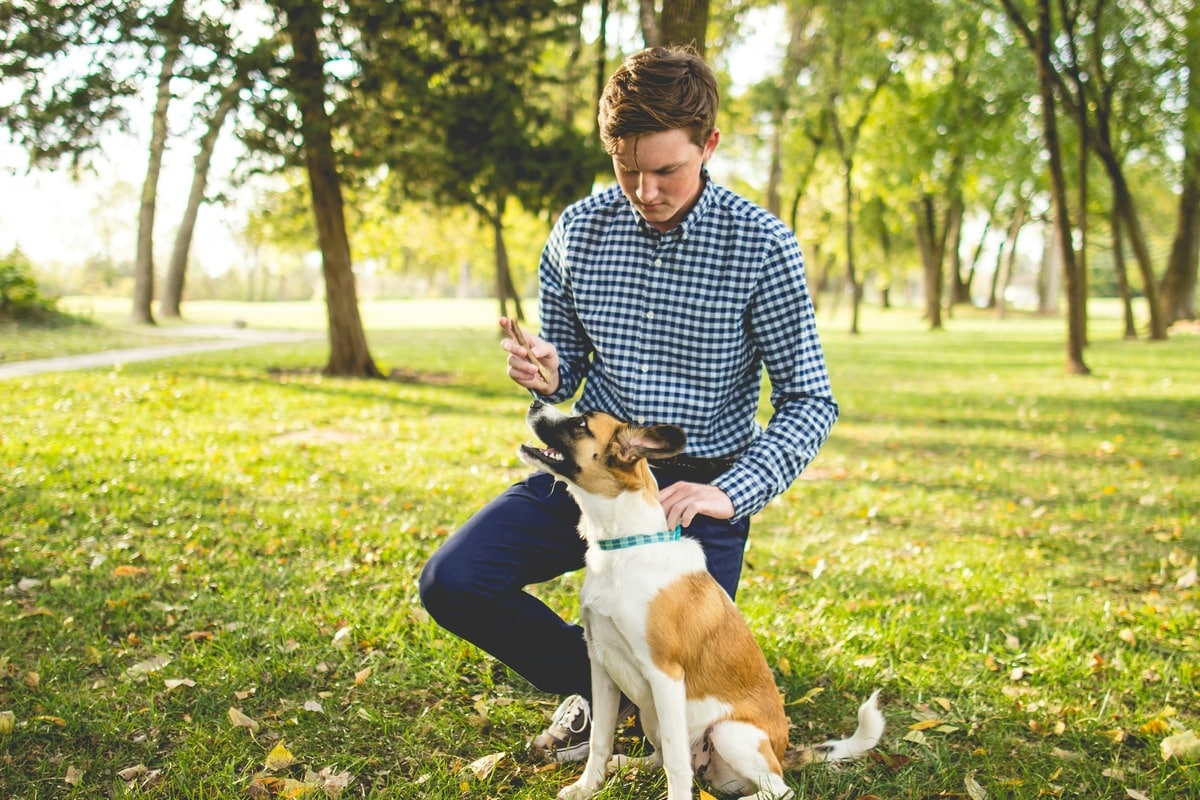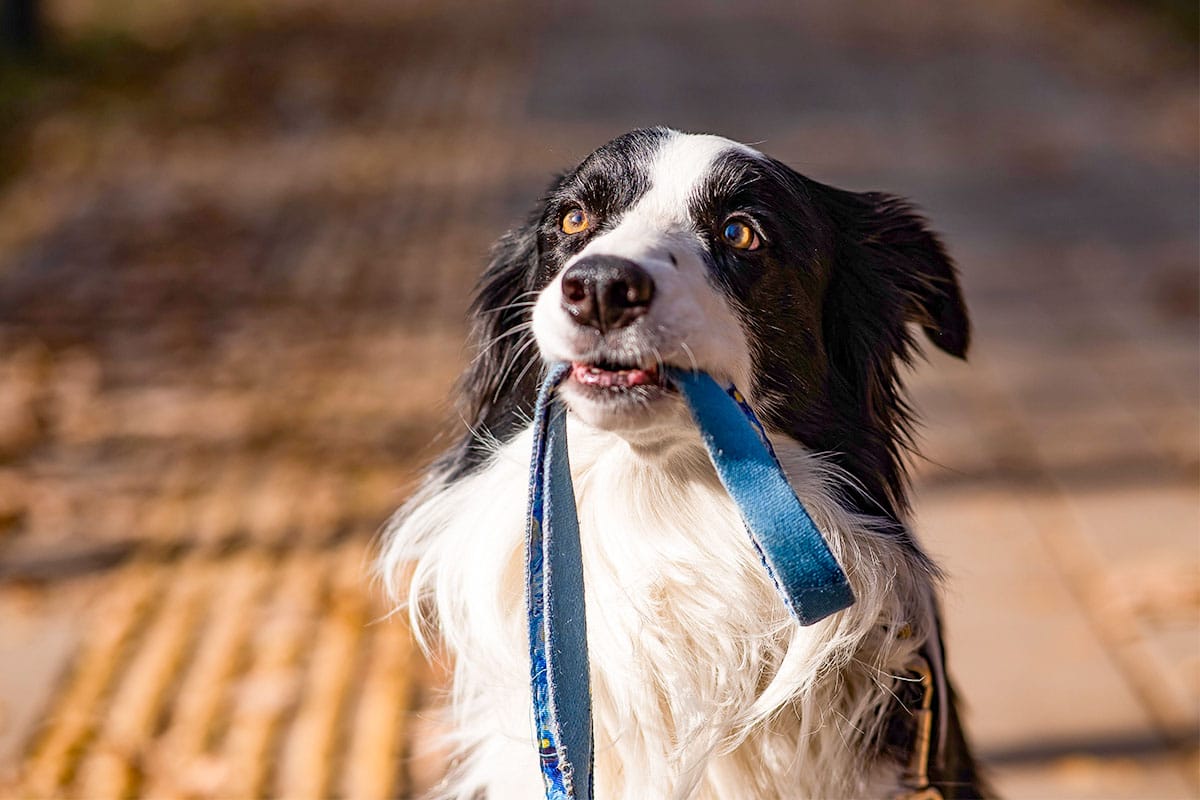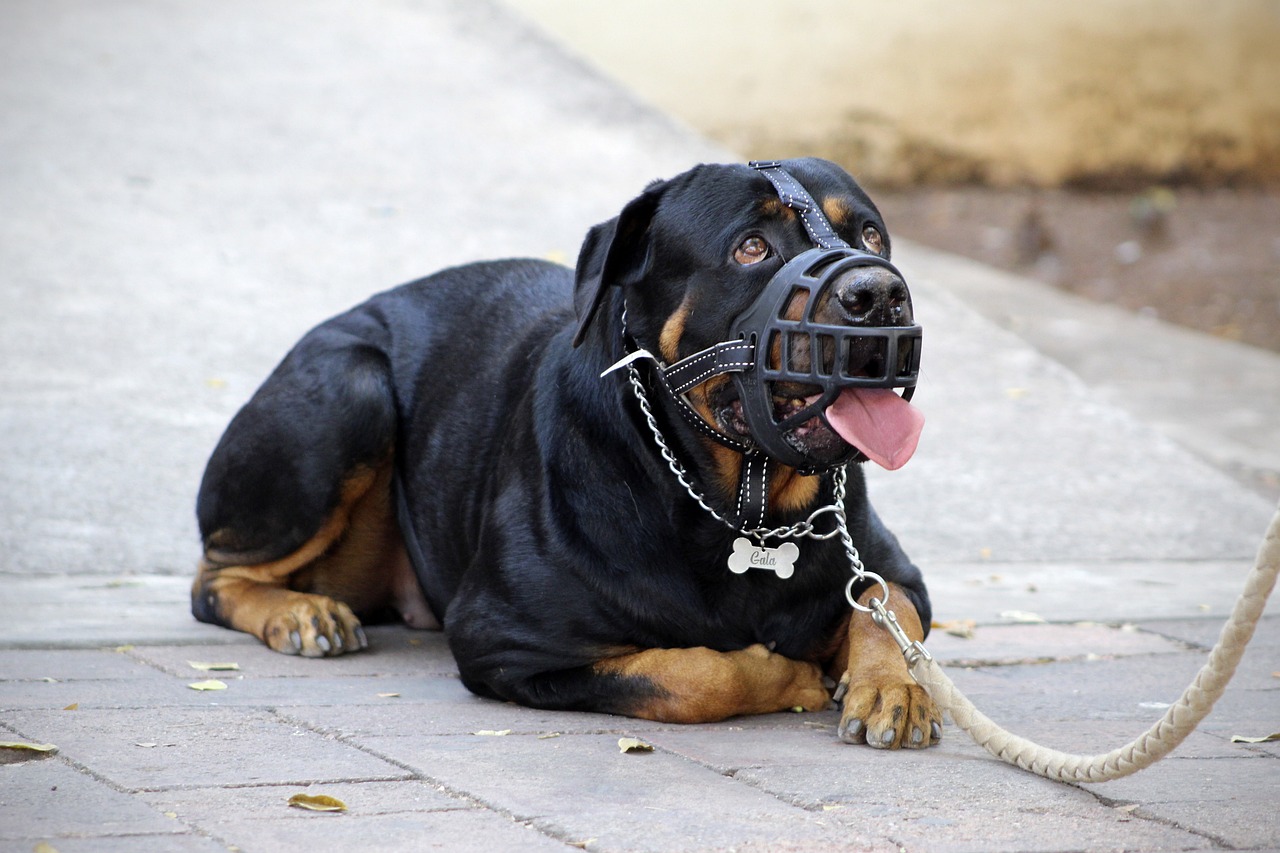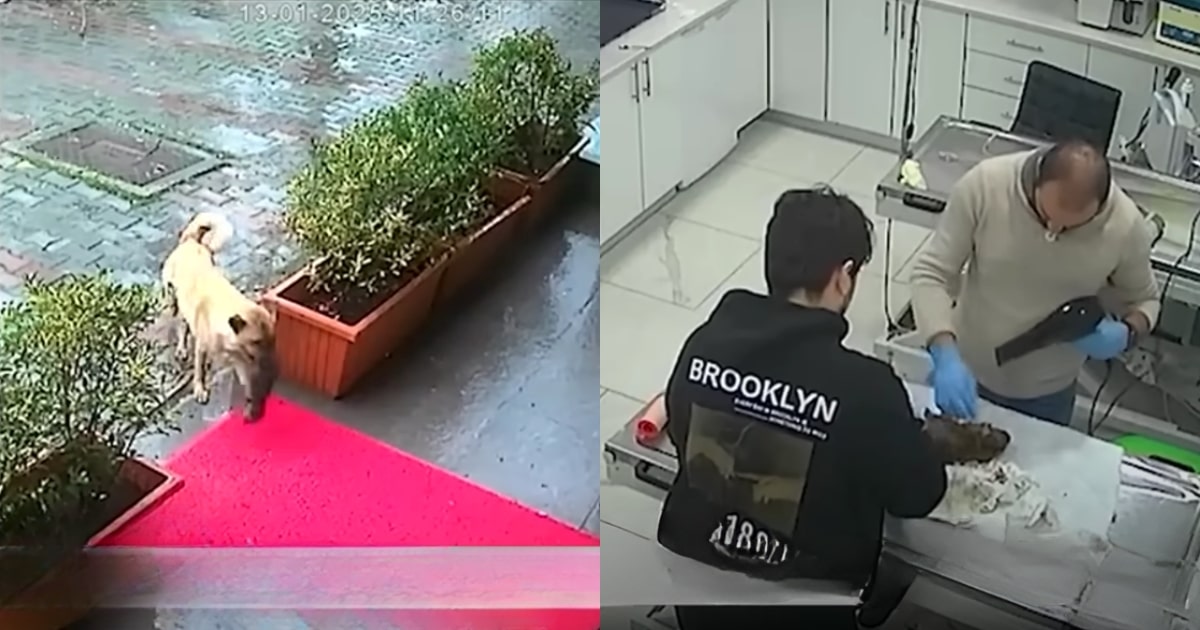 Shutterstock
Shutterstock
Training your dog isn’t just about sit, stay, and pray-they-listen—it’s a bonding adventure filled with tail wags, high-fives, and the occasional chewed-up slipper. Teaching your pup new tricks boosts their mental stimulation, improves obedience, and strengthens your connection. Whether your dog is a puppy with zoomies or a seasoned couch potato, it’s never too late to add a few clever moves to their resume. Dogs love having jobs (even if it’s just spinning in a circle), and you’ll be amazed at how quickly they can learn when you tap into the right strategies. All it takes is consistency, creativity, and a pocket of irresistible treats. Let’s unleash 11 ways to teach your dog new tricks—because who doesn’t want a furry magician in the house?
Use Positive Reinforcement
 Shutterstock
Shutterstock
Dogs thrive on praise and rewards, not stern lectures or guilt trips. Positive reinforcement rewards your desired behavior, like sitting, rolling over, or not stealing your sandwich. Give your pup a treat, a cheerful “yes!” or some enthusiastic belly rubs whenever they perform the trick correctly. This method builds trust and excitement, making them more likely to repeat the action. Plus, who wouldn’t want to work for cookies and applause?
Keep Training Sessions Short and Sweet
 Shutterstock
Shutterstock
Dogs, like humans, have attention spans that can fizzle faster than a bubble in a toddler’s hand. Training sessions should be fun and engaging, not marathon lectures. Stick to 5–10 minutes per session, a couple of times a day. This keeps your dog’s brain fresh and avoids burnout. Short bursts of learning are more effective than long, tiring drills—and you’ll avoid getting the canine equivalent of an eye-roll.
Use Hand Signals
 Shutterstock
Shutterstock
Dogs may not understand your epic TED Talk on why rolling over is essential, but they pick up on gestures. Pairing a specific hand signal with each command gives your pup a visual cue to work with. Over time, they can respond to your movements—even if you’re whispering or the TV is blasting. It’s also handy when you want to quietly show off your dog’s skills, like in a library or during a Zoom meeting.
Be Consistent with Commands
 Shutterstock
Shutterstock
If you say “down” one day and “lie flat like a pancake” the next, your dog will look at you like you’ve completely lost it. Choose a single word or phrase for each trick and stick with it. Consistency helps your dog make solid associations between the word and the action. Mixing up commands only confuses them—and let’s face it, they’re already confused about why you talk to the refrigerator.
Start with Easy Tricks
 Shutterstock
Shutterstock
You wouldn’t teach a toddler calculus before learning to count—same goes for your pup. Start with basic tricks like sit, stay, or shake before moving on to backflips and interpretive dance. These foundational tricks give your dog a sense of accomplishment and prepare them for more complex tasks. Once they master the basics, you’ll have their full attention and confidence for the bigger, more impressive moves.
Use High-Value Treats
 Shutterstock
Shutterstock
Dry kibble might work for casual praise, but for new tricks? Bring out the good stuff. Think of small pieces of cheese, cooked chicken, or whatever makes your dog’s eyes bug out joyfully. High-value treats create excitement and motivation, especially when learning something new and challenging. It’s like the difference between working for pocket change and winning the snack lottery.
Break Tricks into Smaller Steps
 Shutterstock
Shutterstock
You wouldn’t expect someone to learn to salsa dance by just saying “go salsa”—you’d break it down into steps. The same goes for dogs. Teaching a trick like “roll over” means first getting them to lie down, shift to their side, and so on. These smaller parts, known as “shaping,” make learning less overwhelming. Celebrate each milestone so they know they’re on the right track—even if they only managed a half-roll.
Practice in Different Locations
 Shutterstock
Shutterstock
Dogs are terrible at generalising. Just because your dog sits perfectly in the kitchen doesn’t mean they’ll do it at the park, beach, or your grandma’s carpet showroom. To help your dog master a trick, practice in different environments with varying distractions. This builds reliability and helps them understand that “sit” means “sit,” whether at home or beside a squirrel buffet.
Make Training a Game
 Shutterstock
Shutterstock
Dogs love to play, and turning training into a game makes learning feel like recess instead of homework. Hide treats, play “find it,” or incorporate a trick into fetch to add excitement. When dogs have fun, they’re more likely to engage and retain what they learn. You’ll laugh, which is a surprisingly effective motivator (especially for humans).
Stay Patient and Don’t Force It
 Shutterstock
Shutterstock
Even the most intelligent dogs have off days, like when a leaf blows by and their brain completely resets. Be patient and go at your dog’s pace. If they’re not getting it, take a break or simplify the trick. Forcing them only leads to frustration and confusion, and nobody wants to be the person yelling “roll over!” at a bewildered Chihuahua for twenty minutes straight.
Celebrate the Small Wins
 Shutterstock
Shutterstock
Did your dog do a high five that looked more like a confused paw swipe? That still deserves a party. Every slight improvement is progress, and celebrating it reinforces the behavior. Cheer them on, clap like they just won an Oscar, and show them that effort matters. The more you celebrate, the more excited your dog will be to try again—and possibly bust out their little encore.
Tricks and Treats and Tail-Wagging Feats!
 Shutterstock
Shutterstock
Teaching your dog new tricks doesn’t have to feel like boot camp—it should feel like a comedy routine with snacks and applause. These techniques don’t just help your dog learn; they strengthen your bond, improve communication, and give your pup the chance to shine. Whether your dog does backflips or nails the perfect “shake,” the journey is what truly matters. So grab those treats, embrace the chaos, and get ready for a show—your dog’s talent, and you’ve got front-row seats.

 1 month ago
20
1 month ago
20


















 English (US) ·
English (US) ·